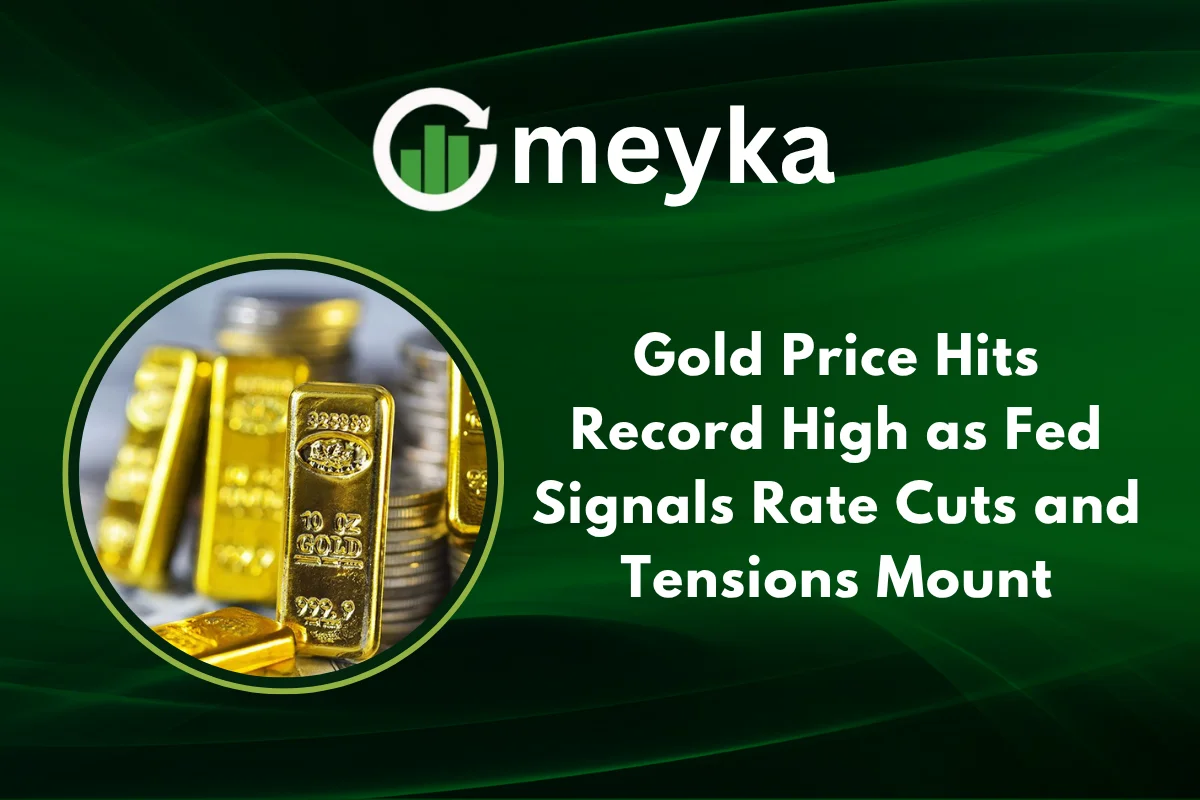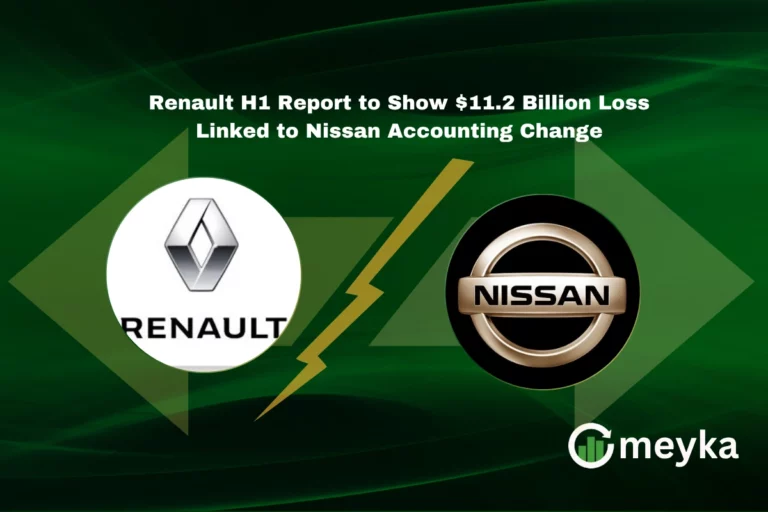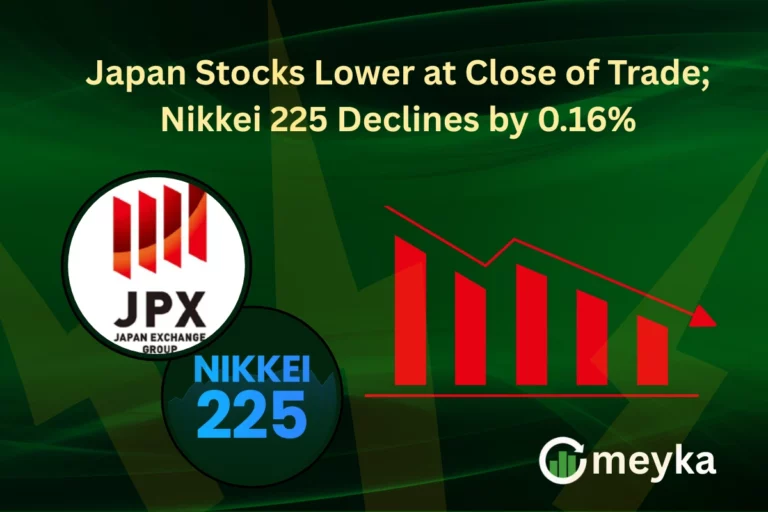Gold Price Hits Record High as Fed Signals Rate Cuts and Tensions Mount
The gold price has surged to unprecedented levels in recent sessions, breaking records and capturing global investor attention. This dramatic rally is being driven by a powerful combination of monetary policy signals from the U.S. Federal Reserve, mounting geopolitical tensions, particularly between Washington and Beijing and growing concern about economic stability.
Surge in Gold Price: Recent Highlights
Gold recently crossed the $4,200 per ounce mark for the first time ever, marking a dramatic acceleration in its upward trajectory. Spot gold appreciated about 1.4% on the day of the record break, while futures for December delivery also saw strong gains.
Earlier, gold had already pierced the $4,100 level, signaling that markets were aggressively pricing in further upside. The rally has moved swiftly: bullion has gained more than 50–60% year-to-date, reflecting its appeal as a safe-haven asset under current stress.
Analysts at major banks are now pushing forward projections. For example, Bank of America has lifted its forecast for gold to $5,000/oz by 2026, citing structural tailwinds behind the rally.
Why Is Gold Rallying? Key Drivers Behind the Move
Fed Signals and Real Interest Rates
One of the most potent catalysts is the shift in market expectations around the Federal Reserve’s interest-rate path. Comments by Fed Chair Jerome Powell, implying a more cautious outlook on rate hikes or even hints toward future cuts, have added momentum to the gold price surge.
When real yields (nominal yields minus inflation) trend lower or even negative, the opportunity cost of holding non-yielding assets like gold diminishes. That dynamic makes gold more attractive compared to bonds or cash.
Geopolitical Tensions and Safe Haven Demand
Heightened U.S.–China trade frictions, threats of tariffs, port fee escalations, and rhetoric around cutting trade ties have driven investors toward the safety of gold.
In times of geopolitical stress, gold tends to perform strongly as investors flee risk and seek assets uncorrelated to equities or volatile markets.
Central Bank Buying & Structural Demand
Beyond speculation, central banks have been net buyers of gold, adding stability to the rally. Many central banks, especially in emerging markets, are diversifying reserves and reducing reliance on the U.S. dollar.
Strong inflows into gold-backed ETFs and institutional demand have further supported the uptrend.
Inflation, Currency Debasement & Weak Dollar
Persistent inflationary pressure has fueled concern over the erosion of purchasing power in fiat currencies. As a non-yielding store of value, gold remains a timeless hedge.
At the same time, the U.S. dollar has weakened, making dollar-priced commodities like gold more attractive to global buyers.
Comparison with Equities, AI Stocks, and Broader Markets
While gold has broken records, equity markets, especially AI and technology stocks, have also drawn attention. Some points to consider:
- Risk appetite vs. safe haven: The gold rally signifies growing worries about macro risks. In contrast, AI stocks often thrive on optimism about growth, disruption, and future earnings. When sentiment sours, gold can outperform risky equity bets.
- Diversification value: A portfolio heavy in AI or high-growth tech stocks can be volatile. Gold offers a low or negative correlation buffer.
- Competitive flows: Some capital is rotating out of overvalued tech names into safer assets like gold.
- Valuation constraints: AI stocks often command high valuations. If interest rates decline, valuations improve, but if growth disappoints, many could still correct sharply.
So while stock research may highlight bright spots in tech and AI, the gold price surge underscores that many investors now hedge against systemic risk rather than chase momentum alone.
Risks, Corrections & What to Watch Next
Overextension & Pullbacks
No asset rises in a straight line. The gold price is vulnerable to short-term pullbacks if expectations for Fed cuts cool, sentiment reverses, or technical momentum stalls.
Inflation Surprises / Economic Surprises
If inflation accelerates more than expected, the Fed could delay cuts or even tighten again, putting downward pressure on gold. Conversely, a strong economic rebound could favor risk assets over safe havens.
Dollar Reversal
A strong rebound in the U.S. dollar, driven by stronger economic data or surprise policy moves, could weigh heavily on gold’s appeal for foreign buyers.
Central Bank Behavior
Should central banks pause purchases or even sell gold under stress, the structural support could fade. Monitoring central bank reserve reports is crucial.
Equity Shock & Liquidity Stress
A sudden equity crash could force liquidations across asset classes, including gold, if leveraged positions or margin calls kick in.
Strategic Perspectives for Investors
- Entry timing: Even though gold is already at record highs, momentum often carries trends further. Investors may choose to enter via phased positions.
- Use of derivatives & ETFs: For those unwilling to hold physical metal, gold ETFs (e.g. GLD) or futures offer exposure.
- Hedged allocations: Rather than placing a heavy concentration in gold, many investors choose to keep a moderate allocation (around 5–15% of their portfolio) to help manage risk and maintain balance.
- Cross-asset view: Monitor signals in bond yields, currency movements, and real rates, they are powerful leading indicators for gold.
- Keep watch on AI/growth names: While gold protects, pockets of growth can still offer upside. A balanced approach can harness both protection and opportunity.
Conclusion
The gold price has entered uncharted territory, driven by a potent mix of expectations for a Fed rate cut, geopolitical strain, inflation concerns, and structural demand from institutions and central banks. While equities, particularly AI stocks, remain in focus, the gold rally is a sobering indicator that many are prioritizing protection over growth.
The current environment favors a diversified strategy: remain attentive to signals from the Federal Reserve, real yields, central bank behavior, and equity sentiment. As the gold price continues to rise, investors should strike a balance between the desire for returns and diligent risk management.
FAQs
When interest rates decline, real yields (after inflation) often turn lower or negative. This reduces the opportunity cost of holding non-yielding assets like gold, making gold more attractive compared to bonds or cash.
Yes. A surge into safe havens like gold often reflects rising risk aversion, which can precipitate flows out of high-beta or speculative equities, including AI stocks.
Both strategies have merit. Physical gold offers certainty of ownership, while ETFs/futures offer ease of liquidity, lower cost, and ease of trading. The best choice depends on one’s risk tolerance, storage options, and trading preferences.
Disclaimer:
This content is made for learning only. It is not meant to give financial advice. Always check the facts yourself. Financial decisions need detailed research.






